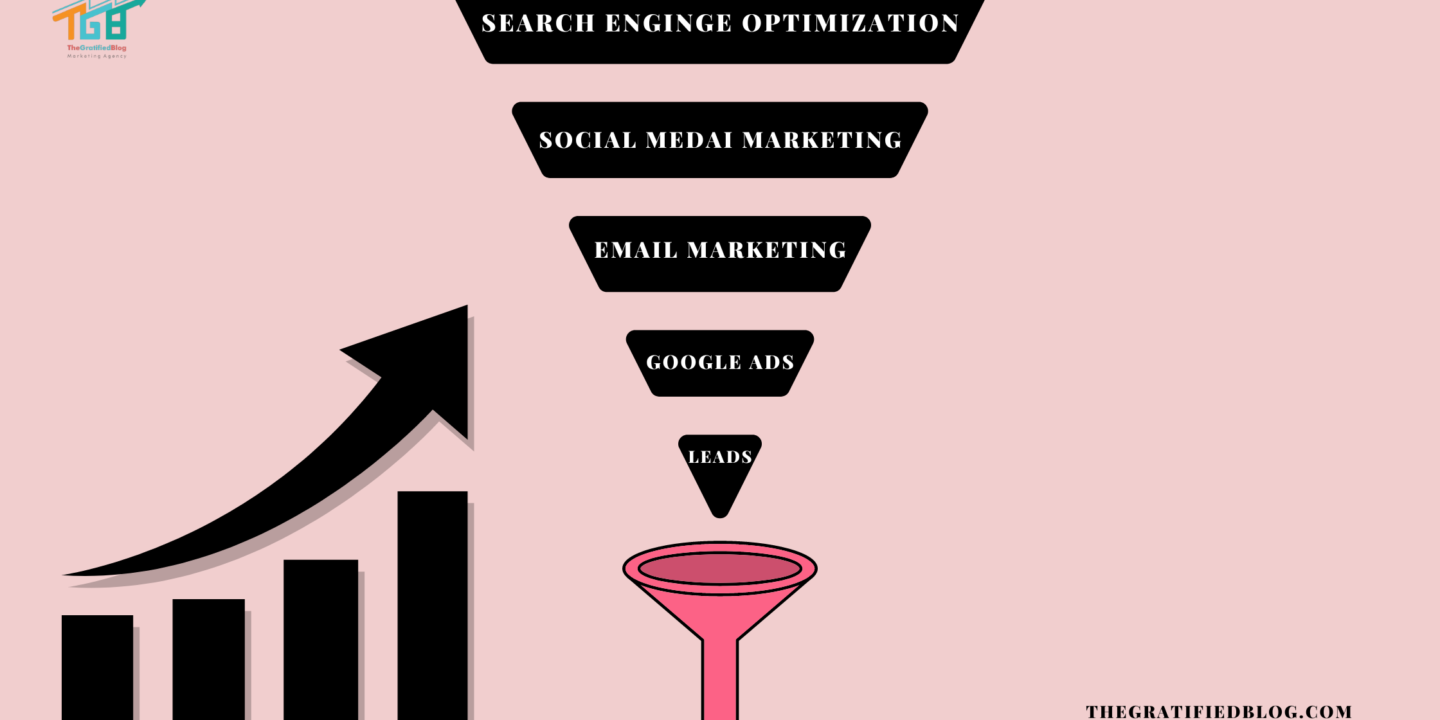
Did you know many businesses don’t track their valuable Digital Marketing KPIs? That’s a huge mistake. Monitoring your KPIs is necessary to know whether or not your digital marketing campaigns are successful.
This comprehensive guide will discuss the different KPIs of digital marketing that you need to track and how to track them. We’ll also cover the different categories of KPIs and give you some in-depth insights into the key metrics and benchmarks you should be looking at.
So, let’s dive into the concept of KPIs,
Digital Marketing KPIs And Its Benefits
Digital marketing KPIs are key metrics that you use to measure the success of your online marketing campaigns, strategies, or activities. KPIs provide insights into various aspects of digital marketing, such as audience engagement, conversions, website traffic, brand awareness, and return on investment (ROI). These metrics help marketers assess the success of their efforts, make data-driven decisions, and optimise their marketing strategies.
Whether you’re an SEO professional, social media marketer, or Google Ads expert, key performance indicators are essential to track your digital marketing success effectively.
Source: YouTube
There are many benefits of tracking key performance indicators for digital marketing. Some of them are mentioned below:
Performance Measurement: Digital marketing KPIs provide measurable benchmarks for assessing the performance and effectiveness of marketing campaigns, channels, and strategies.
Data-Driven Decisions: By analysing digital marketing KPIs, businesses can make data-driven decisions to optimise their marketing efforts, allocate resources effectively, and improve overall campaign performance.
Identifying Areas for Improvement: Monitoring KPIs helps identify areas of strengths and weaknesses in digital marketing campaigns, allowing businesses to focus on areas that require improvement and optimisation.
ROI Tracking: Digital marketing KPIs enable businesses to track the return on investment from marketing activities and determine the profitability and effectiveness of marketing campaigns.
Goal Setting and Alignment: Establishing clear digital marketing KPIs helps set goals, align marketing efforts with business objectives, and measure progress towards achieving key outcomes.
Digital marketing KPIs are critical in evaluating performance, optimising strategies, and driving success in today’s digital landscape.
Now, let’s dive into the critical digital marketing KPIs you should track.
Digital Marketing KPIs are specific to the goals and objectives of a campaign or marketing initiative. They track progress, identify improvement areas, and measure marketing activities’ impact on business outcomes.
Well, there are several categories of key performance indicators for digital marketing. Which includes the following:
- Search Engine Optimization
- Social Media Marketing
- Google Advertising
- Email Marketing, and
- Lead Generation
Let’s discuss what KPIs are included in each and how to track them.
Search Engine Optimaizaiton (SEO)
In simple terms, SEO is all about optimising your website and content to rank higher in search results.
Some of the KPIs of SEO are as follows:
Rankings And Traffic
Ranking refers to the position of your website in search engine results pages (SERPs). It might be helpful to track key rankings for your target keywords and key pages on your website.
Traffic refers to the number of people visiting your site. You can track this by looking at your website’s traffic analytics, such as Google Analytics, Google Search Console, or SimilarWeb.
Backlinks
This refers to the number of links that return to your website from other sites or blogs. You can track this using tools like Ahrefs, Majestic, and SEMrush.
Domain Authority And Page Authority
These both refer to the authority of your website and individual web pages. You can track these metrics using Moz’s free tools, such as their
Bounce Rate
It refers to the percentage of people who leave your site after viewing one page. You can track this using tools like Google Analytics and can use it to identify key pages that may need optimisation.
Monitoring and analysing these SEO KPIs can help you assess the effectiveness of your SEO strategies, identify improvement areas, and make data-driven decisions to enhance your website’s visibility and performance in search engine results.
Social Media Marketing (SMM)
As the name suggests, social media marketing involves using social media platforms to promote your product or service. You need to track several social media platforms daily.
But here are the common KPIs that you can track on any social media platform:
Engagement
It refers to the number of likes, comments, and shares on your posts. You can track this using various social media analytics tools. It measures audience engagement and brand awareness.
Reach And Traffic
These refer to the number of people who may have seen your posts. You can track this using various social media analytics tools, such as Measured and Sprout Social.
Traffic refers to the number of people who have clicked on your links or visited your website directly from your social media posts. You can track this using tools like Google Analytics and Search Console.
Conversion
It refers to the number of people who have taken the desired action due to your social media posts or advertising, such as purchasing or filling out a form.
Social Media Followers and Subscribers
The number of people who follow or subscribe to a brand’s social media accounts. It measures the growth and reach of a brand’s online presence.
Video Completion Rate
Video Completion Rate (VCR) is a key performance indicator in digital marketing that measures the percentage of viewers who watch a video advertisement. It provides insights into the level of engagement and effectiveness of video content.
By tracking and analysing these SMM KPIs, businesses can measure the impact of their social media marketing strategies, identify areas for improvement, and optimise their social media campaigns to achieve their marketing objectives and drive business growth.
Google Advertising
Google Adwords is a crucial platform for digital advertising, allowing you to reach new audiences through paid search results. But remember, it’s a game of money – so you need vital metrics to track the success of your campaigns.
Some critical KPIs to consider here are:
Cost Per Click (CPC)
It refers to the average cost you pay per click on an ad. It also ensures that you will only pay your target cost.
Conversion Rate (CR)
This is the percentage of people who have taken the desired action after clicking on your ads, such as purchasing or filling out a form.
Cost Per Conversion
This is the total cost of an ad divided by the number of conversions. Use this to compare the prices of different campaigns and monitor ROI.
Click-Through Rate (CTR)
This is the number of people who click on your ad divided by the number of times it was shown. You can use this to track critical ads or key audiences for optimisation and better ROI.
Relevance Score
Google uses This scoring system to rank ads based on their quality and relevance to a specific audience. Your score, the more likely you are to reach them at a lower cost!
By tracking and analysing these Google Advertising KPIs, advertisers can evaluate the performance of their campaigns, identify improvement areas, and optimise their advertising strategies to achieve their marketing goals and objectives.
Email Marketing
Email marketing is a critical component of any digital marketing strategy, allowing you to build strong relationships with your customers and keep them up-to-date on the latest news.
There are several key metrics that you can track to optimise your email campaigns:
Open Rate
This refers to the percentage of people who open your email. You can track this using tools like Mailchimp or Sendgrid to identify critical factors that may impact your open rates, such as the timing of your campaigns or the content in your emails.
Click-Through Rate (CTR)
Refers to the percentage of people who clicked on one of your links within an email. This can help you optimise your email strategy’s critical parts, such as the subject line or call-to-action buttons.
Unsubscribe Rate And Bounce Rate
It refers to the percentage of people who unsubscribed from your list or had a delivery issue with one of your emails. Both are important indicators of your email list quality and can give you critical insights into how to improve.
Lead Generation
Lead generation is critical for many businesses to grow their customer base and revenue. There are specific vital metrics to track when it comes to lead generation, such as:
Cost per lead (CPL)
This refers to the cost of acquiring a new lead and is often calculated based on the cost of marketing campaigns or advertising efforts.
Leads Per Month
This is the number of new leads you have acquired over a given period and can be vital in evaluating your marketing ROI.
Retention Rate and Attrition Rate
This refers to the percentage of leads who become customers after being acquired. This helps you identify key customer segments and optimise your marketing efforts accordingly.
Attrition rate refers to the percentage of customers who cancel their subscriptions or stop using your services over a period.
By monitoring and analysing these email marketing KPIs, businesses can assess the performance of their email campaigns, identify improvement areas, and optimise their email marketing strategies to drive engagement, conversions, and revenue.
FAQs
- What are Digital Marketing KPIs?
Digital Marketing KPIs (Key Performance Indicators) are measurable metrics used to evaluate the effectiveness of digital marketing campaigns and strategies. - Why are Digital Marketing KPIs Important?
Digital Marketing KPIs provide valuable insights into the performance and impact of marketing efforts, helping businesses make informed decisions and optimise strategies for better results. - Which Digital Marketing KPIs Should I Track?
The digital marketing KPIs you track depend on your business goals, objectives, and channels. Common KPIs include website traffic, conversion rates, click-through rates, cost per acquisition, and return on investment. - How Often Should I Review Digital Marketing KPIs?
Digital Marketing KPIs should be reviewed regularly, depending on the frequency of campaigns and the pace of your business. Weekly, monthly, and quarterly reviews are common. - What Tools Can I Use to Track Digital Marketing KPIs?
Various tools for tracking digital marketing KPIs are available, including Google Analytics, social media analytics platforms, email marketing software, and customer relationship management (CRM) systems. - How Can I Use Digital Marketing KPIs to Improve Performance?
Digital Marketing KPIs can help identify areas of strength and weakness in your campaigns. By analysing KPI data, you can optimise strategies, reallocate resources, and focus on tactics that drive the best results. - What Should I Do If My Digital Marketing KPIs Are Below Expectations?
Review your strategies, messaging, targeting, and channels if your digital marketing KPIs are below expectations. Experiment with different approaches, A/B test your campaigns and seek insights from data analysis to improve. - How Can I Set Realistic Digital Marketing KPIs?
Set realistic digital marketing KPIs by aligning them with your business objectives, considering industry benchmarks and historical data, and ensuring they are specific, measurable, achievable, relevant, and time-bound (SMART). - Should I Adjust Digital Marketing KPIs Over Time?
It’s essential to adjust digital marketing KPIs over time to reflect business goals, market conditions, and campaign performance changes. Regularly evaluate KPIs and update them to stay aligned with your objectives. - How Can I Measure the Success of Digital Marketing KPIs?
The success of digital marketing KPIs is measured by comparing actual performance against predefined targets or benchmarks. Determine whether KPIs meet objectives, drive desired outcomes, and contribute to overall business growth.
Conclusion
Now, you have a crystal clear understanding of digital marketing KPIs and how to track them. Then why wait for the results? Track your marketing KPIs today and optimise your marketing strategy for better ROI!
If you have any questions about the KPIs, please leave them in the comment section. We will be happy to answer you.
Thanks for reading 🙂








No Comments